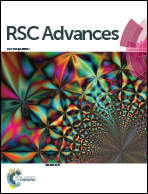Effect on thermal stability of microstructure and morphology of thermally-modified electrospun fibers of polybenzoxazines (PBz) blended with sulfur copolymers (SDIB)
Abstract
Simple modification by thermal treatment is the commonly used approach to enhance the performance of electrospun fibers. This was investigated in the thermal treatment of polybenzoxazine (PBz) fibers blended with sulfur copolymers (SDIB) to determine the effect of varying treatment conditions on the microstructure and morphology of PBz fibers with the effect of incorporating sulfur functional groups on resulting properties. Mechanical properties of PBz are greatly improved by thermally-induced ring-opening polymerization (ROP) of the oxazine ring. Blending with sulfur copolymers (SDIB) could have beneficial effects on endowed features on fibers but could also affect the resulting properties of SDIB-blended PBz fibers during crosslinking reactions. Fiber mats were fabricated by electrospinning of PBz (10 wt%) blended with SDIB (10 wt%). Physical modification with varying conditions of sequential thermal treatment were evaluated and compared to the conditions applied on pristine PBz fibers. Changes in morphology and microstructure of fibers after modification were analyzed through scanning electron microscopy (SEM) while elemental compositions were identified after varying the conditions of thermal treatment. Adjustment of treatment conditions using two-step temperature sequential thermal treatment with higher temperatures of 160 °C and 240 °C showed significant changes in microstructure and morphology of fibers. Lower temperatures of 120 °C and 160 °C exhibited microstructure and morphology of fibers which affected the fiber diameter and fiber networks. Cross-sectional SEM images also confirmed the adversed effect of high-temperature treatment conditions on fibrous structures while low-temperature treatment retained the fibrous structures with more compact and stiff fiber networks. SDIB-blended PBz fibers were also evaluated by TGA and DSC to correlate the changes in structure and morphology with the thermal stability and integrity of blended SDIB/PBz fibers as compared to pristine PBz with the effect of change in treatment conditions. Fiber strength indicated slower weight loss for blended fibers and higher onset temperature of degradation which resulted in more thermally stable fibers.



 Please wait while we load your content...
Please wait while we load your content...